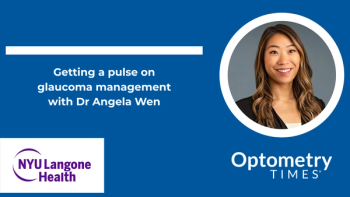
Identify retinal disease with proper tools
Structural and functional tests may be used for the detection and monitoring of retinal diseases, just as they are for other ocular diseases.
New York-Structural and functional tests may be used for the detection and monitoring of retinal diseases, just as they are for other ocular diseases, according to Diana L. Shechtman, OD, FAAO, associate professor, Nova Southeastern University, Fort Lauderdale, FL. Dr. Shechtman spoke here at Vision Expo East.
"For managing common entities, such as glaucoma," she said, "we often combine functional and structural testing such as visual field, nerve fiber layer analysis, and examination of the optic nerve head. However, we don't use many of those same principles when it comes to retinal disease, although we know that retinal disease has structural signs as well as symptoms. We certainly use structural and functional testing to diagnose and monitor glaucoma-so why aren't we doing the same for retinal disease?"
Dr. Shechtman recommended incorporating commonly used structural testing such as optical coherence tomography (OCT) with functional tests, such as preferential hyperacuity perimetry (PreView PHP, Carl Zeiss Meditec Inc.), in the evaluation of patients with age-related macular degeneration (AMD).
PHP identifies deviations in the retina using a vision test based on hyperacuity, or the patient's ability to identify a subtle misalignment of one object compared with another. PHP allows central field defects to be mapped across the macula, which may help in early diagnosis of conversion from dry to wet AMD.
Many practitioners may be looking for a single test that provides a diagnosis of retinal diseases such as macular degeneration. "However, it's not that simple," Dr. Shechtman said.
"OCT has certainly proven to be very valuable when it comes to diagnosing and monitoring AMD," she said. "Although there is clinical evidence regarding the specificity and sensitivity of the PHP in the evaluation of AMD, there isn't enough evidence yet to know exactly how clinically valuable PHP will be just yet.
"As more optometrists use it and more scientific base evidence is compiled, I think people will start embracing tests like PHP, as well as other new modalities," she added. "The combination of various diagnostic modalities can aid in the evaluation and management of AMD. Perhaps a functional analysis may help identify the disease in cases where the structural test didn't, and vice-versa."
OCT can be used to evaluate an array of retinal disease, and PHP is being looked at for the evaluation of other entities, such as toxic maculopathy. As for AMD, she recommended using both tests as early as possible in order to acquire baseline data. "Validating any change over time is critical," she said.
Dr. Shechtman said she wouldn't necessarily conduct baseline testing on every patient.
"If I see a 65-year-old patient who has a family history of AMD but no clinical signs, I'm not going to do the baseline testing," she said. "But if it's a 65-year-old patient who is showing some early signs of drusen, and there are questionable pigmentary changes, it's helpful to identify the baseline data. Certainly, the most important patients will be the intermediate patients, because you want to identify the earliest conversion of intermediate dry AMD to wet AMD as soon as possible."
Ultimately, using both structural and functional testing may not only lead to earlier diagnosis of AMD, it can also establish and define the role of the optometrist. Dr. Shechtman said. "When it comes to management of wet AMD, our role is early diagnosis in order to refer for prompt treatment. The prognosis of the patient often relies upon the early diagnosis."
FYI
Diana L. Shechtman, OD, FAAO
Phone: 954/262-1402
E-mail:
Dr. Shechtman has received lecture honoraria or serves on the advisory boards or speaker's bureaus of Alcon, Allergan, Bausch + Lomb, Carl Zeiss Meditec, and Reichert.
Newsletter
Want more insights like this? Subscribe to Optometry Times and get clinical pearls and practice tips delivered straight to your inbox.



















































.png)


